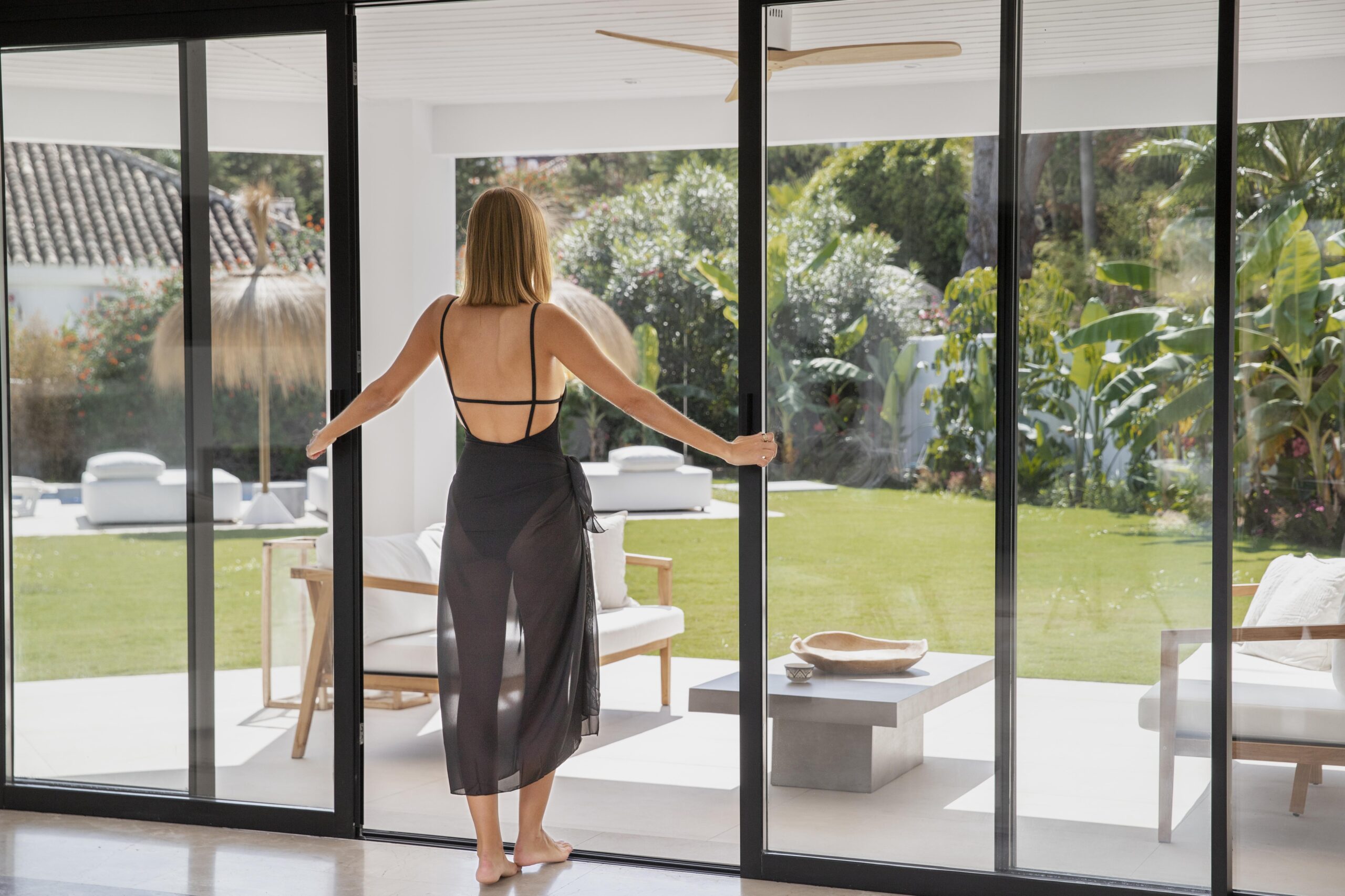Let’s explore what really determines a sliding door’s lifespan and how you can make yours last decades.
If you’ve ever wondered how long a sliding door can last, you’re not alone. Based on my experience, a well-installed and properly maintained sliding door can easily last 20 to 30 years — sometimes even longer. However, that range depends heavily on the material quality, maintenance habits, usage frequency, and environmental exposure.
Most modern sliding doors are designed to last at least two decades. High-quality materials like aluminum and fiberglass tend to perform best over time, while vinyl or uPVC models may show wear sooner if not cared for properly.
In my experience, well-maintained sliding doors easily reach the 30-year mark — especially when homeowners stay consistent with cleaning and lubrication.
Several variables influence lifespan:
Maintenance: neglecting dirt buildup in tracks accelerates wear.
Environment: salt air, humidity, or direct sunlight can degrade seals.
Usage: high-traffic areas see faster component fatigue.
A sliding door that’s used often but well-maintained can still last longer than a neglected one in a mild climate.
From what I’ve seen, homes that follow a simple maintenance routine — cleaning tracks monthly and lubricating twice a year — rarely face serious issues before the 25-year mark.

| Material | Average Lifespan | Notes |
|---|---|---|
| Aluminum | 25–35 years | Strong, corrosion-resistant, great for humid climates. |
| Vinyl/uPVC | 20–25 years | Affordable but can warp under heat or UV exposure. |
| Wood | 15–25 years | Aesthetic, but requires regular sealing and painting. |
| Fiberglass | 30+ years | Highly durable and energy efficient. |
The better the material quality, the longer it resists wear from weather and movement stress.
Doors that open dozens of times a day experience much more strain. If your sliding door is in a busy area, expect to replace rollers and handles more often.
Regular cleaning and lubrication are crucial. Neglecting track cleaning can make the door stiff and noisy long before its time. Use a silicone-based lubricant on tracks every six months.
Coastal homes or sun-exposed patios see faster degradation of seals and paint. I’ve seen doors exposed to direct sunlight lose their smooth glide within just a few years due to thermal expansion.
Small fixes go a long way. Addressing minor misalignments or replacing worn rollers early prevents major frame damage and costly replacements.
Vacuum or brush tracks monthly.
Wipe with mild soap and water — avoid abrasive cleaners.
Apply silicone spray or dry lubricant twice a year.
| Component | Recommended Frequency |
|---|---|
| Tracks | Clean monthly |
| Rollers | Lubricate every 6 months |
| Weatherstripping | Inspect annually |
| Glass & Frame | Clean quarterly |
Ignoring squeaky rollers or misaligned tracks.
Using oil-based lubricants that attract dust.
Leaving doors partially open in windy conditions.
✅ Inspect and tighten screws.
✅ Clean tracks thoroughly.
✅ Lubricate all moving parts.
✅ Check seals for cracks or gaps.
✅ Repair small issues immediately.
If you have to force it, your rollers or tracks may be damaged beyond simple repair.
Cracks compromise insulation and security. Replacement is the safest option.
Feeling a breeze? That’s a clear sign of seal failure or frame warping.
Older doors often let in heat or cold, raising energy bills.
If multiple issues appear — misalignment, foggy glass, worn seals — replacement is more cost-effective in the long run..
In many cases, repairing small issues like rollers or handles can add years of life. However, once the frame warps or glass seals fail, replacement is the better investment. As I’ve learned over the years: small fixes go a long way — ignoring minor misalignments often leads to expensive replacements.
Sliding doors can easily last 20 to 30 years or more with proper care. From my own experience, consistent maintenance — cleaning, lubrication, and quick repairs — makes all the difference. Whether your door is aluminum, vinyl, or wood, giving it a little attention every few months can extend its life by many years.
After years of dealing with different materials and climates, I’ve learned that a bit of maintenance goes a long way in keeping a sliding door running smoothly for decades.
Usually between 20 and 30 years, depending on quality and maintenance.
Absolutely. Aluminum and fiberglass outperform vinyl and wood in harsh environments.
Look for stiffness, drafts, or visible damage — these are clear warning signs.
Clean monthly, lubricate every six months, inspect seals yearly.
Yes. Advances in materials and weatherproofing make newer models more energy-efficient and longer-lasting.



Palm Beach County
Boca Raton, Highland Beach, Delray Beach, Boynton Beach, West Palm Beach, Jupiter, Palm Beach Gardens, Wellington, Palm Springs, Greenacres, Juno Beach Florida
Broward County
Parkland, Pompano Beach, Coral Springs, Coconut Creek, Margate, Deerfield Beach
Are you looking for sliding door repair services? If your sliding door is giving you the trouble we can help.
Perfect Sliding Doors has been in the sliding door business for over 12 years. We know our sliding doors inside and out, and we’ll make sure your sliding door operates smoothly.
Perfect Sliding Doors offers a wide range of sliding door installation and repair services. We’ll help you find the perfect sliding door for your home and provide the best installation and repair services around.
Sliding Doors, and Sliding Door Related Products. We offer the best sliding doors, sliding door installation, and sliding door repair services.